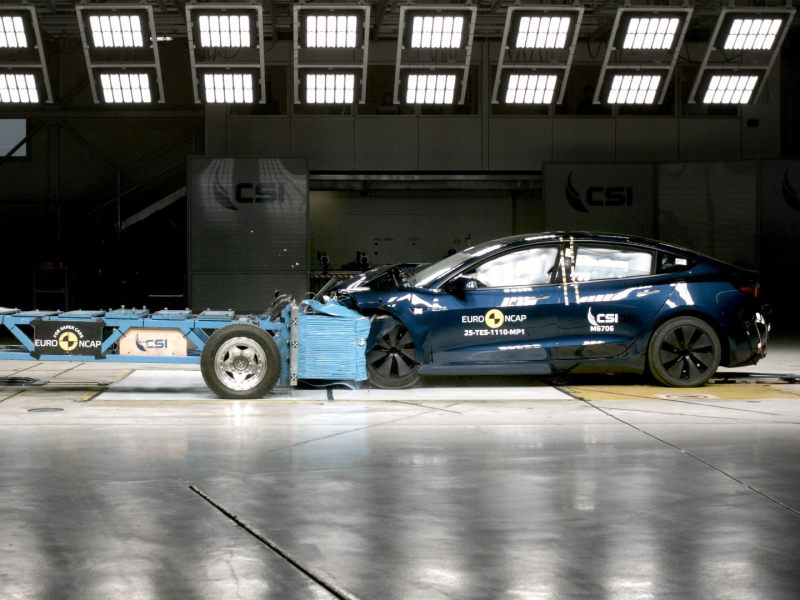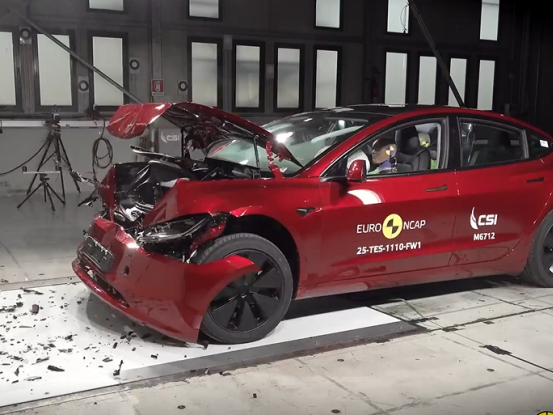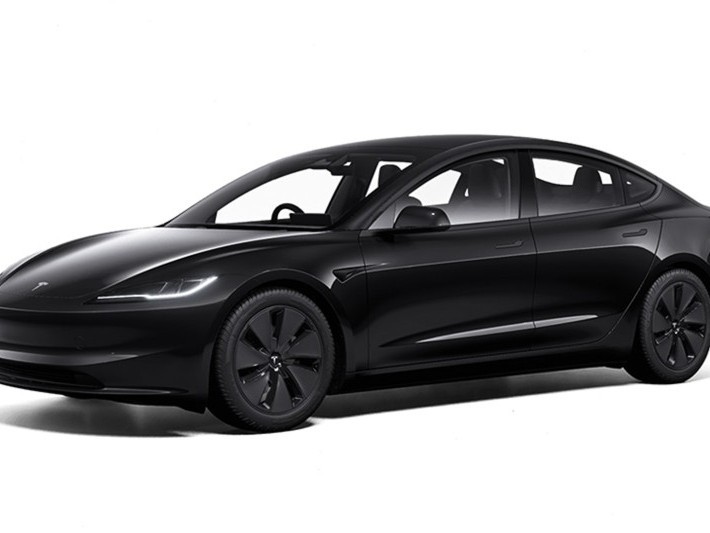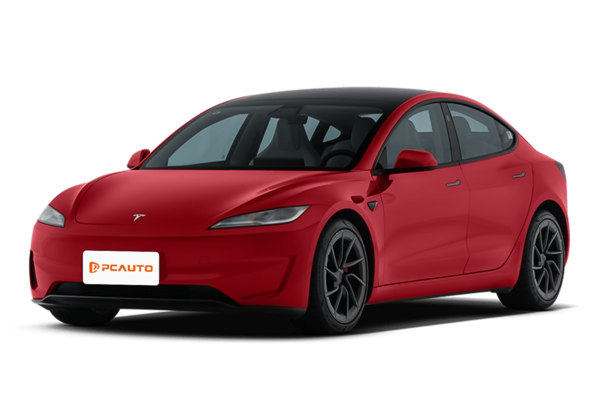Q
how much is tesla model 3 in malaysia
In Malaysia right now, the Tesla Model 3's price tag varies depending on the trim you go for. The entry-level Rear-Wheel Drive version starts at around RM190,000, while the high-performance Performance AWD model pushes closer to RM250,000. Of course, the final figure can shift based on optional extras or any ongoing promotions.
The Tesla Model 3 has made a name for itself in the EV sedan space, thanks to its solid range and smart driving tech. Take the Standard Range variant, for example—it delivers roughly 400 kilometers on a single charge and comes packed with Autopilot as standard.
Helping sweeten the deal, the Malaysian government offers some tax incentives for electric vehicles, like cuts on import duties and sales tax. These definitely help bring down the overall cost of ownership. On top of that, Tesla's charging network in Malaysia is slowly but surely expanding, with Superchargers now covering major cities, which is a big plus for owners needing quick top-ups.
If you're thinking about making the switch to an EV, besides the upfront price, it's worth checking out the charging infrastructure coverage and your daily running costs. In the long haul, EVs usually save you money on fuel and maintenance compared to petrol cars.
Special Disclaimer: This content is published by users and does not represent the views or position of PCauto.
Related Q&A
Q
What Segment is Tesla Model 3?
The Tesla Model 3 falls into the D-segment category (also known as the "mid-size car" or "Executive Car" niche). This segment typically includes mid- to high-end models with a body length of around 4.6 to 4.9 meters and a wheelbase of 2.7 to 2.9 meters. Its competitors encompass traditional luxury brand models like the BMW 3 Series and the Mercedes-Benz C-Class.
In the Malaysian market, the Model 3 has become a key choice for local consumers to access high - end electric vehicles, thanks to its advantages in electrification technology (such as a range of up to 491 kilometers under the WLTP standard on a single charge) and intelligent features (like Autopilot assisted driving). Notably, the Malaysian government offers preferential policies such as exemption from import duties for electric vehicles, making the Model 3 more price - competitive locally.
The D - segment cars, with their moderate body size (for example, the Model 3 is 4,720mm long), combine flexibility and space practicality on Malaysian city roads, making them particularly suitable for congested urban environments like Kuala Lumpur. Other electric options in the same segment include the BYD Seal and the Hyundai Ioniq 6. However, the Model 3 still maintains a significant edge, thanks to Tesla's well - established charging network (12 Supercharger stations have been deployed across Malaysia).
Q
What is the Reslae Value of Tesla Model 3?
The Tesla Model 3 has a relatively high second - hand resale value in Malaysia. This is mainly due to its brand influence, the maturity of electric vehicle technology, and low maintenance costs. According to market observations, the Model 3 can still retain about 60 - 70% of its residual value after three years of use, which is better than many fuel - powered vehicles in the same class. This is related to its long battery life, continuous software updates, and the improvement of charging infrastructure.
For Malaysian consumers, the tax - exemption policy for electric vehicles further reduces the cost of purchasing a car, indirectly increasing the demand in the second - hand market. In addition, Tesla's global unified pricing strategy reduces price fluctuations, making the second - hand car prices more stable.
If you're considering buying a Model 3, it is recommended that you pay attention to the battery health and warranty period, as these factors can significantly affect the resale value. Meanwhile, the gradually expanding charging network in Malaysia also makes the use of electric vehicles more convenient, which will help maintain its second - hand market performance in the long run.
Q
What is the PCD Size of Tesla Model 3?
The PCD (Pitch Circle Diameter) of the Tesla Model 3 is 5x114.3 mm. This means that its wheels have 5 bolt holes, evenly distributed on a circle with a diameter of 114.3 mm. This is a common specification for many modern cars, especially widely used in Japanese and some European models. For Malaysian car owners, it's very important to know the PCD size because it's a key parameter when replacing wheels or upgrading the braking system, ensuring that the new wheels match the original vehicle perfectly. Additionally, the PCD size also affects the vehicle's handling and safety. An incorrect PCD may lead to the wheels not being installed properly or vibrations during driving.
The wheels of the Tesla Model 3 are also compatible with wheels having a center bore diameter of 64.1 mm, and the bolt thread specification is M14x1.5. These details need to be noted when purchasing modified wheels. Since the climate in Malaysia is rainy and humid, it is recommended that car owners choose high - quality wheels and regularly check the bolt tightening to ensure driving safety.
Q
Does Tesla Model 3 Support Apple Carplay?
Currently, the Tesla Model 3 doesn't support the Apple CarPlay feature. This is mainly because Tesla adheres to using its self - developed Infotainment system. This system integrates functions such as navigation, entertainment, and vehicle control, aiming to offer an integrated user experience. Although Apple CarPlay is a standard or optional feature in many other brands' models, Tesla owners can achieve similar functions through its built - in streaming services, Bluetooth connection, or the Tesla mobile app.
For users in Malaysia, Tesla's local services are gradually being improved. For example, it supports local maps and voice commands. So, even without Apple CarPlay, daily use remains convenient. If you have high requirements for in - vehicle connectivity functions, you can look into some models from other brands like BMW, Mercedes - Benz, or the local brand Proton. These models usually offer Apple CarPlay support. However, Tesla's unique advantage lies in its highly integrated system and OTA update capability, which can continuously bring new features to users.
Q
What is the Tyre Brand of Tesla Model 3?
The common original - equipment tire brands for the Tesla Model 3 in the Malaysian market include Michelin, Bridgestone, and Goodyear. The specific configurations may vary depending on the vehicle model version or production batch. For example, the high - performance version may be paired with tires like Michelin Pilot Sport 4S, which focus on grip. The selection of these international brands is to balance the instantaneous torque requirements unique to electric vehicles, low - noise performance, and range optimization. In particular, Michelin's noise - reduction technology can effectively offset the road noise that becomes more noticeable due to the lack of engine noise in electric vehicles.
It's worth noting that Malaysia has a tropical climate with frequent rainfall. Car owners can pay attention to the wet - road performance indicators of tires (such as the AA traction rating in the UTQG grade). When replacing tires, they can also consider the commonly seen Continental from Germany or locally - assembled Japanese brands like Yokohama, which also have formulations suitable for high - temperature and rainy road conditions. Tesla service centers usually recommend suitable replacement tires based on the road conditions in Malaysia. It is recommended that car owners regularly check the tire pressure to ensure it is within the numerical range required for electric vehicles, which is particularly important for maintaining the driving range.
Q
Is Tesla Model 3 a Good Car? Learn the Pros and Cons Here
As a pure - electric sedan, the Tesla Model 3 has a certain appeal in the Malaysian market. Its advantages include excellent acceleration performance, advanced autonomous driving assistance features, and relatively low daily usage costs. In particular, the electricity cost is more economical compared to that of fuel - powered vehicles, making it suitable for urban commuting in Malaysia. Additionally, the Model 3's high - tech interior design and OTA remote upgrade function also provide users with a convenient experience.
However, its drawbacks are also worth noting. For instance, given that the charging infrastructure in Malaysia is not fully popularized, long - distance travel may encounter the problem of inconvenient charging. Meanwhile, the relatively high initial purchase price and the later battery replacement cost may also make some consumers hesitate.
For Malaysian users, if their daily commuting distance is short and there are charging facilities at home or in the workplace, the Model 3 is a good choice. But if they often need to drive long - distance, they may need to plan the charging route more carefully.
Overall, the Model 3 stands out in terms of environmental protection and technology. However, before making an actual purchase, it is necessary to comprehensively consider personal vehicle - using needs and budget.
Q
What is the Width of Tesla Model 3?
The body width of the Tesla Model 3 is 1,848 millimeters (excluding mirrors). This dimension performs excellently in the urban driving environment in Malaysia. It's suitable for maneuvering through narrow streets while still offering a spacious interior. The Model 3's streamlined design not only optimizes the drag coefficient to improve the range but also incorporates an advanced layout of cameras and sensors to support the Autopilot intelligent driving function.
For Malaysian consumers, the width of the Model 3 is similar to that of common mid - sized Japanese or European sedans in the local market. However, its electric platform structure allows for higher utilization of interior space, especially in the rear legroom. Notably, since electric vehicles don't require the traditional transmission structure, the central floor is completely flat, which further enhances the seating comfort.
Against the backdrop of the increasing popularity of charging facilities in Malaysia, the Model 3's compact size and efficient energy consumption make it an ideal choice for urban commuting. Meanwhile, its high - tech interior and OTA remote upgrade function also meet the preferences of the local young consumer group for smart cars.
Q
What is the Road Tax Price of Tesla Model 3? How to Calculate?
In Malaysia, the road tax price for the Tesla Model 3 is calculated based on the electric vehicle's motor power (kW), rather than the engine capacity of traditional fuel-powered vehicles. This is a special policy implemented by the Malaysian government for electric vehicles. According to the current regulations, the formula for calculating the road tax for electric vehicles is: a charge of RM20 per kilowatt (kW). For example, the rear - wheel - drive version of the Tesla Model 3 has a motor power of 208kW, so its road tax would be 208 x RM20 = RM4,160. The high - performance all - wheel - drive version has a motor power of 377kW, and its road tax would be 377 x RM20 = RM7,540.
It should be noted that electric vehicles in Malaysia enjoy road tax exemption benefits. As of the end of 2023, the government has temporarily waived the road tax for electric vehicles. Therefore, currently, Tesla Model 3 owners do not need to pay road tax. However, future policies may be adjusted, and it is recommended to follow the latest announcements from the Malaysian Ministry of Transport.
In addition, electric vehicles in Malaysia also enjoy preferential policies such as import tax and consumption tax exemptions. These policies aim to encourage more people to choose environmentally friendly vehicles and reduce carbon emissions.
If you are considering buying a Tesla Model 3, apart from the road tax, you can also learn about practical information such as the distribution of charging facilities and the installation of home charging piles to better plan your vehicle - using life.
Q
What is the Second Hand Price of Tesla Model 3? Check Used Price Here
In Malaysia, the price of used Tesla Model 3s is influenced by factors such as the vehicle's age, mileage, configuration, and condition. Currently, the price range is approximately between 120,000 and 180,000 Malaysian ringgit, depending on the specific circumstances of the vehicle. For example, a 2020 standard - range version with low mileage might cost around 120,000 ringgit, while a well - conditioned 2022 long - range or performance version could reach about 180,000 ringgit.
When buying a used electric vehicle, it's advisable to check the battery's health status and the remaining warranty period. Tesla's official battery warranty usually lasts for 8 years or 160,000 kilometers, which is an important guarantee for second - hand buyers. Moreover, the Malaysian government offers tax incentives for electric vehicles, such as exemptions on import and sales taxes, which indirectly enhances the cost - effectiveness of used Teslas.
If you're considering buying a used Model 3, it's recommended to go through official certified channels or reputable used - car dealers. This ensures that the vehicle has undergone professional inspections and comes with a complete warranty service. Plus, you'll enjoy a more transparent transaction process.
Q
What is the Tyre Pressure of Tesla Model 3?
The recommended standard tire pressure for the Tesla Model 3 is 2.9 to 3.1 bar (42 to 45 psi). The specific values may vary slightly depending on the vehicle configuration or tire model. Owners can find the official recommended values on the label of the door frame or in the vehicle manual. In Malaysia, where the climate is hot, the tire pressure will increase slightly as the temperature rises. It is recommended to check the tire pressure at least once a month, especially before long - distance driving, to ensure driving safety and energy - efficiency. Using a Tire Pressure Monitoring System (TPMS) can monitor the tire pressure status in real - time. If the tire pressure is too low, it will increase tire wear and energy consumption; if it is too high, it will affect the grip and comfort. It's worth noting that for electric vehicles, due to the special distribution of battery weight, maintaining the correct tire pressure is particularly important for the range performance. At the same time, it is recommended to choose the original - certified tires to meet the vehicle's performance requirements.
Latest Q&A
Q
What is the CC of Honda City 2020?
The 2020 Honda City hits the Malaysian market with two engine choices: a 1.5-liter SOHC i-VTEC naturally aspirated petrol engine and a 1.5-liter DOHC i-VTEC hybrid system. Let's break down the specs. The petrol unit displaces 1497cc, cranking out 121 horsepower and 145 Nm of torque. On the hybrid side, it pairs that same 1.5-liter engine with an electric motor, resulting in a combined 109 horsepower – this one's all about fuel sipping efficiency.
Now, CC (cubic centimeters) is the measure of engine displacement, and it directly impacts how a car performs and drinks fuel. Typically, a bigger displacement means more power, but it can also mean higher fuel bills. The City's 1.5-liter sweet spot is a big reason it's so popular in Malaysia – it strikes that perfect balance between pep and fuel economy, handling both city commutes and longer drives like a champ.
But the 2020 City isn't just about the engine bay. It also comes loaded with Honda Sensing safety tech and a modern, fresh interior design, which really ups its game in the market. For Malaysian buyers, this car ticks all the boxes: practical, easy on the wallet at the pump, and packed with the latest tech. It's a solid all-rounder.
Q
How much does a Honda 2020 cost?
Prices for the 2020 Honda models in Malaysia vary quite a bit depending on the specific model and how it's kitted out. Take the Honda City, for example – you're looking at roughly RM70,000 to RM90,000. The Civic sits a bit higher, usually ranging from around RM110,000 up to RM140,000, while the CR-V typically falls between RM140,000 and RM170,000. exact figures hinge on the trim level, engine specs, and any extra add-ons you might go for.
When buying a new car in Malaysia, it's not just the sticker price you need to factor in. There's registration fees, insurance, road tax – all that extra stuff adds up and affects the final on-the-road cost.
Over in the used car market, 2020 Honda models will fluctuate in price too, based on mileage, condition, and remaining warranty. You can generally pick one up for 20% to 40% less than a brand-new equivalent.
If you're in the market, I'd definitely recommend shopping around different dealers to compare quotes. It's also worth checking out any ongoing Honda promotions or financing deals – those can really help you save some cash.
Hondas have a solid rep in Malaysia for being reliable and fuel-efficient, especially popular models like the City and Civic. They're pretty affordable to own long-term, and getting them serviced or repaired is relatively straightforward.
Q
What is the top speed of Honda City 2020?
The 2020 Honda City maxes out at around 190 km/h, which is the top speed you can squeeze out of its 1.5-liter i-VTEC naturally aspirated engine under ideal conditions. Of course, in the real world, you might see a slight difference depending on road conditions, how much you're carrying, or the weather. This car is pretty popular in the Malaysian market, and it's not just because of its solid performance—it's also about that fuel efficiency and nimble handling that makes city driving a breeze. The CVT gearbox in the City does a good job smoothing out power delivery, so acceleration feels seamless and efficient, whether you're commuting daily or hitting the highway for a longer drive. For Malaysian buyers, beyond just top speed, overall performance and maintenance costs matter a lot, and the City delivers here too. Its low trouble rate and wide service network make life easier for owners. If you're craving a bit more zip, there's always the Honda City RS variant. It gets some tweaks to the engine tuning and sportier bits, but don't expect a huge jump in top speed—these cars are all about balancing practicality with a bit of driving fun, after all.
Q
How safe is the Honda City 2020?
The 2020 Honda City holds its own when it comes to safety, packing in 6 airbags, Vehicle Stability Assist (VSA), Anti-lock Braking System (ABS), and Electronic Brake-force Distribution (EBD). That's a pretty solid setup for the class, and it should do a good job of keeping you protected during those daily drives around Malaysia. Honda's ACE Body Structure is also on board here, which is designed to effectively disperse crash energy and boost occupant safety in the event of a collision. It's worth highlighting that the 2020 City scored a 5-star rating in ASEAN NCAP crash tests, which is a solid stamp of approval for its safety credentials. For Malaysian buyers, picking this car means you're not just getting Honda's usual reputation for reliability, but also a decent level of safety kit. If safety is a top priority for you, it's definitely worth checking out the specific safety features when you're looking to buy – things like whether it comes with Honda Sensing. That suite includes handy advanced features like Adaptive Cruise Control and Lane Keeping Assist, which can go a long way in making your drives even safer.
Q
What is the fuel economy of the Honda City 2020?
The 2020 Honda City demonstrates excellent fuel efficiency in the Malaysian market. The variant equipped with the 1.5L i-VTEC petrol engine and CVT transmission has an official combined fuel consumption of 5.4 L/100km (approximately 18.5 km/L). The hybrid e:HEV variant is designed for even higher efficiency, though its specific fuel consumption figure should be verified with official sources or latest reviews, as the widely cited 3.4 L/100km (approximately 29.4 km/L) lacks direct support in the provided search results and may not reflect real-world conditions in Malaysia. Both powertrains closely align with the demands of Malaysian consumers who prioritize fuel economy. Actual fuel consumption may vary depending on factors such as driving habits, road conditions, and vehicle load. Therefore, adhering to a regular maintenance schedule is crucial for maintaining optimal fuel efficiency.
Given Malaysia's hot and humid climate, judicious use of the air conditioning system and maintaining the recommended tire pressure can contribute significantly to improving fuel economy. As a top-selling model in the B-segment sedan market in Malaysia, the Honda City's fuel efficiency remains competitive against its peers, making it a practical choice for daily commuting and family use. The e:HEV hybrid version, in particular, presents a compelling option for environmentally conscious drivers seeking to minimize long-term running costs, pending verification of its specific fuel economy claims.
View MoreRelated News

Tesla launches Model Y Standard in the US, removes glass roof
MichaelOct 9, 2025

Tesla Model 3 scored the highest in 2025 Euro NCAP, becoming the safest new car in Europe
AshleyJul 8, 2025

2025 Tesla Model 3: Euro NCAP 5-Star Safety Champion
LienMay 23, 2025

Tank vs Tesla: The Underbody Wins
WilliamMay 12, 2025

Want a Comfortable Long-Range Ride? Tesla Model 3 Delivers!
WilliamApr 17, 2025
View More

















Pros
Cons